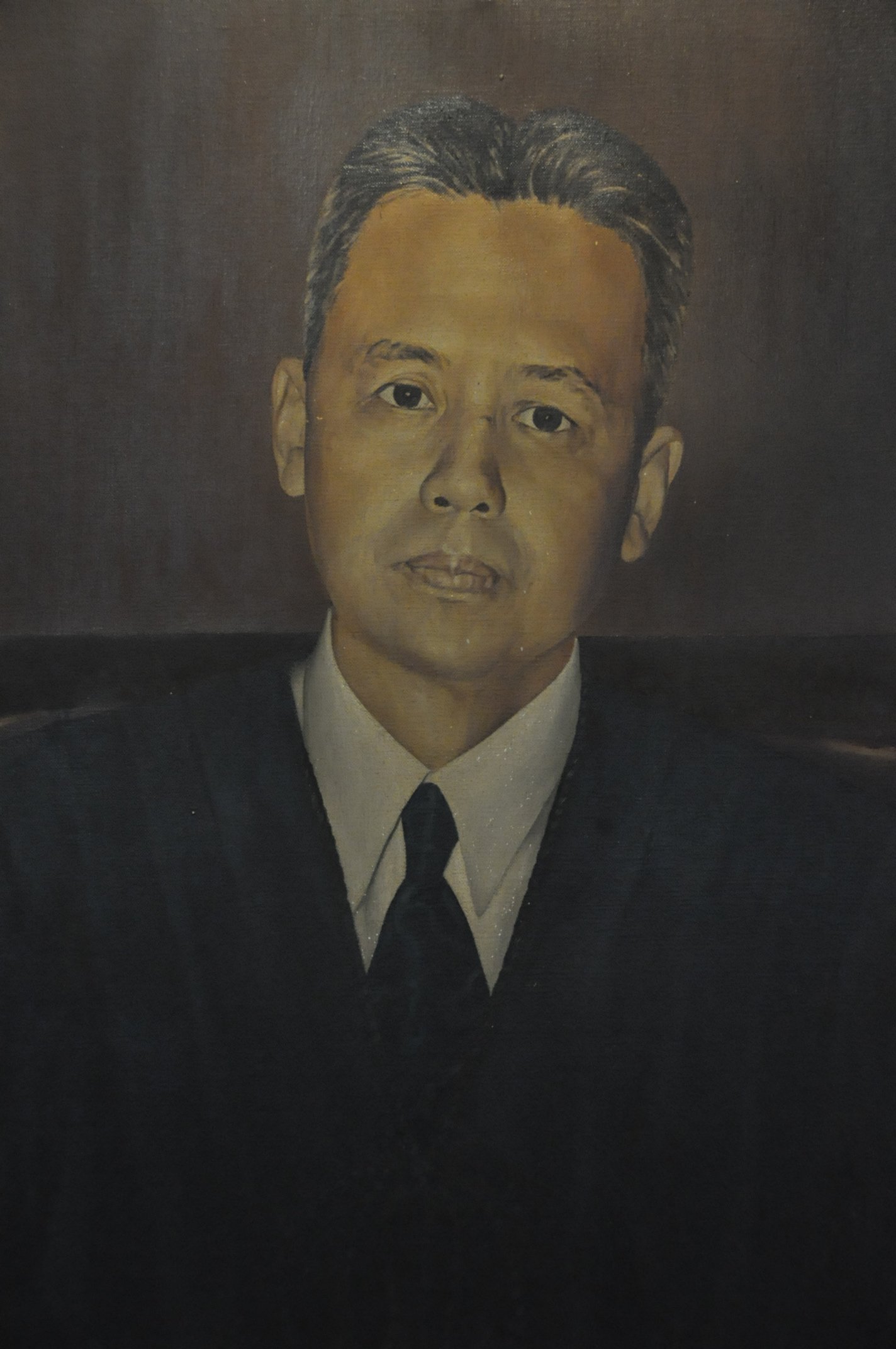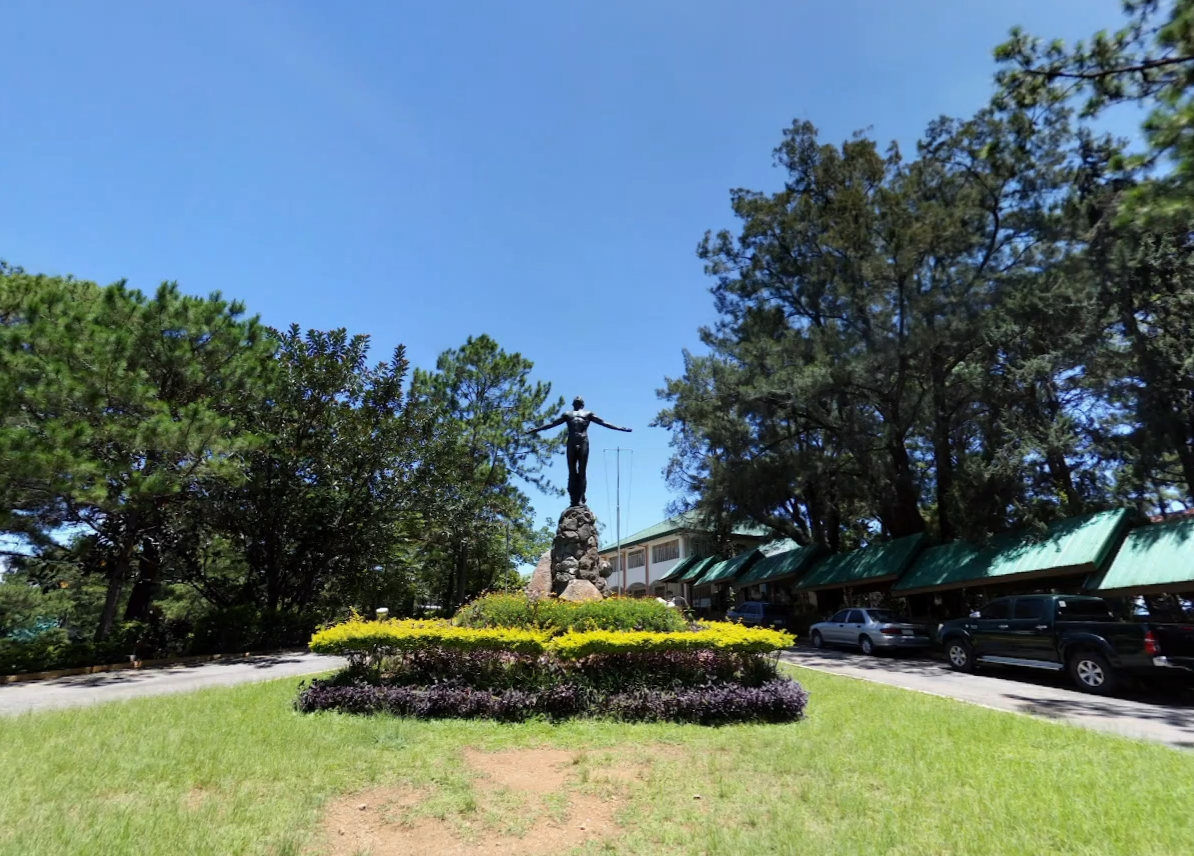|
Krus Na Ligas
Krus na Ligas is a barangay in Diliman, Quezon City in the Philippines. It is located within the premises of the University of the Philippines Diliman. It has a population of 21,287 based on the census conducted in 2020. History Krus na Ligas was founded in the 17th century by Marikina townsfolk who settled in the hilly area to cultivate the land. The residents called their community Gulod (Tagalog for ''hilltop''). It became a ''visita'' of Marikina, and as popular folklore has it that a small chapel was built near a cross-shaped marking nut tree known in Tagalog as ''ligas'' stood. It was first recorded in 1705 with 30 families residing in the community. After the Battle of Pasong Tamo on 26 August 1896, during the Philippine Revolution against Spain, Andres Bonifacio, Emilio Jacinto, Guillermo Masangkay, Pio Valenzuela and other Katipuneros camped in Krus na Ligas and met in one of the houses fronting Plaza Santa Inez before heading to San Juan del Monte. In 1939, Krus n ... [...More Info...] [...Related Items...] OR: [Wikipedia] [Google] [Baidu] |
Barangay
The barangay (; abbreviated as Brgy. or Bgy.), historically referred to as ''barrio'', is the smallest Administrative divisions of the Philippines, administrative division in the Philippines. Named after the Precolonial barangay, precolonial polities of the same name, modern barangays are political subdivisions of cities and municipalities which are analogous to Village#Philippines, villages, districts, neighborhoods, suburbs, or boroughs. The word ''barangay'' originated from ''balangay'', a type of boat used by a group of Austronesian peoples when they migrated to the Philippines. All Municipalities of the Philippines, municipalities and Cities of the Philippines, cities in the Philippines are politically subdivided into barangays, with the exception of the municipalities of Adams, Ilocos Norte, Adams in Ilocos Norte and Kalayaan, Palawan, Kalayaan in Palawan, each containing a single barangay. Barangays are sometimes informally subdivided into smaller areas called ''purok'' ( ... [...More Info...] [...Related Items...] OR: [Wikipedia] [Google] [Baidu] |
Emilio Jacinto
Emilio Jacinto y Dizon (; December 15, 1875 – April 16, 1899) was a Filipinos, Filipino general during the Philippine Revolution. He was one of the highest-ranking officers in the Philippine Revolution and was one of the highest-ranking officers of the revolutionary society ''Kataas-taasang, Kagalang-galang na Katipunan ng mga Anak ng Bayan'', or simply and more popularly called ''Katipunan'', being a member of its Supreme Council. He was elected Secretary of State for the Haring Bayang Katagalugan, a revolutionary government established during the outbreak of hostilities. He is popularly known in Philippine history textbooks as the ''Brains of the Katipunan'' (Filipino:Utak ng Katipunan) while some contend he should be rightfully recognized as the "Brains of the Revolution" (Filipino language, Filipino: ''Utak ng Himagsikan,'' a title that is usually given to Apolinario Mabini). Jacinto was present in the so-called Cry of Pugad Lawin (or Cry of Balintawak) with Andrés Bonifaci ... [...More Info...] [...Related Items...] OR: [Wikipedia] [Google] [Baidu] |
Supreme Court Of The Philippines
The Supreme Court (; colloquially referred to as the ' (also used in formal writing), is the highest court in the Philippines. It was established by the Taft Commission on June 11, 1901, through the enactment of Act No. 136, which abolished the Real Audiencia of Manila, the predecessor of the Supreme Court. The Supreme Court compound is located in what was formerly a part of the University of the Philippines Manila campus. It occupies the corner of Padre Faura Street and Taft Avenue in Ermita, Manila, with the main building sited directly in front of Philippine General Hospital's cancer institute. History Early history Prior to the conquest of Spain, the islands of the Philippines were composed of independent barangay state, barangays, each of which is a community composed of 30 to 100 families. Typically, a barangay is headed by a ''datu'' or a local chief who exercises all functions of government: executive, legislative and judicial; he is also the commander-in-chief in time ... [...More Info...] [...Related Items...] OR: [Wikipedia] [Google] [Baidu] |
Edgardo Angara
Edgardo Javier Angara (, September 24, 1934 – May 13, 2018) was a Filipino lawyer and politician who served as Senate President from 1993 to 1995. Angara had the second longest tenure in the history of the Senate, serving four terms and a total of twenty-three years. As a legislator, Angara has championed numerous important laws and bills including the free high school law, the Senior Citizen discount law, and many more. In between his Senate stints, Angara also served as Secretary of Agriculture from 1999 to 2001 and also held other government positions briefly. Outside politics, Angara served as the President of the University of the Philippines and also established himself as one of the most important figures in the bar when he was elected president of the Philippine Bar Association, the nation's oldest voluntary bar society. In 1975, he also served as president of the Integrated Bar of the Philippines (IBP), the country's unified association of lawyers. His leadershi ... [...More Info...] [...Related Items...] OR: [Wikipedia] [Google] [Baidu] |
Philippine Daily Inquirer
The ''Philippine Daily Inquirer'' (''PDI''), or simply the ''Inquirer'', is an English-language newspaper in the Philippines. Founded in 1985, it is often regarded as the Philippines' newspaper of record. The newspaper is the most awarded broadsheet in the Philippines and the multimedia group, called The Inquirer Group, reaches 54 million people across several platforms. History The ''Philippine Daily Inquirer'' was founded on December 9, 1985, by publisher Eugenia Apóstol, columnist Max Solivén, together with Betty Go-Belmonte during the last days of, and becoming one of the first private newspapers to be established under the Presidency of Ferdinand Marcos, Marcos regime. The ''Inquirer'' succeeded the weekly ''Philippine Inquirer'', created in 1985 by Apostol to cover the trial of 25 soldiers accused of complicity in the Assassination of Ninoy Aquino, assassination of opposition leader Ninoy Aquino at Ninoy Aquino International Airport, Manila International Airport on Augu ... [...More Info...] [...Related Items...] OR: [Wikipedia] [Google] [Baidu] |
University Of The Philippines
The University of the Philippines (UP; ) is a Higher education in the Philippines#State universities and colleges, state university system in the Philippines. It is the country's national university, as mandated by List of Philippine laws, Republic Act No. 9500 (UP Charter of 2008), giving it institutional autonomy. Originally founded by the Insular Government, American occupational government on June 18, 1908, it was established through the ratification of Act No. 1870 of the 1st Philippine Legislature to serve as an "advanced instruction in literature, philosophy, the sciences and arts, and to give professional and technical training" to eligible students regardless of "age, sex, nationality, religious belief and political affiliation." The University of the Philippines system has 8 constituent universities (CUs) and 1 autonomous college: University of the Philippines Diliman, UP Diliman, which serves as the system's flagship university, University of the Philippines Los B ... [...More Info...] [...Related Items...] OR: [Wikipedia] [Google] [Baidu] |
Elpidio Quirino
Elpidio Rivera Quirino (; November 16, 1890 – February 29, 1956) was a Philippine nationality law, Filipino lawyer and politician who served as the 6th President of the Philippines from 1948 to 1953. A lawyer by profession, Quirino entered politics when he became a representative of Ilocos Sur's Ilocos Sur's 1st congressional district, 1st district from 1919 to 1922. He was then elected as a senator from 1925 to 1935. In 1934, he became a member of the Philippine Independence Commission that was sent to Washington, D.C., which secured the passage of Tydings–McDuffie Act to the American Congress, United States Congress. In 1935, he was also elected to the 1934 Philippine Constitutional Convention election, 1935 Constitutional Convention that drafted the 1935 Constitution of the Philippines, 1935 Philippine Constitution for the newly established Commonwealth of the Philippines, Philippine Commonwealth. In the new government, he served as secretary of the interior and finance u ... [...More Info...] [...Related Items...] OR: [Wikipedia] [Google] [Baidu] |
President Of The Philippines
The president of the Philippines (, sometimes referred to as ) is the head of state, head of government and chief executive of the Philippines. The president leads the executive branch of the Philippine government and is the commander-in-chief of the Armed Forces of the Philippines. The president is Direct election, directly elected by the Filipinos, citizens of the Philippines and is one of only two nationally elected executive officials, the other being the vice president of the Philippines. However, four vice presidents have assumed the presidency without having been elected to the office, by virtue of a president's intra-term death or resignation. Filipinos generally refer to their president as ''pangulo'' or ''presidente'' in their local language. The president is limited to a single six-year term. According to Article 7 Section 4 of the Philippine 1987 Constitution, the president "shall not be eligible for any reelection" and that, "no person who has succeeded as pres ... [...More Info...] [...Related Items...] OR: [Wikipedia] [Google] [Baidu] |
Business Mirror
''BusinessMirror'' is a daily business newspaper in the Philippines, founded in 2005 by Antonio Cabangon-Chua, who was also its publisher and the owner of radio network Aliw Broadcasting Corporation. ''BusinessMirror'' has a daily circulation of 82,000. ABS-CBN agreement On April 30, 2014, ''BusinessMirror'' and ABS-CBN Integrated News and Current Affairs (consisting of ABS-CBN News Channel The ABS-CBN News Channel, commonly known as ANC, is a 24/7 Philippine pay television news channel. It was launched in 1996 as the first all-news network in English language. The majority of its programs are produced by ABS-CBN News and Curre ... and its online affiliate, ABS-CBNnews.com) signed a content sharing/partnership agreement that will boost both entities to continue to deliver the credible business and economy news in the country. Officers of ''BusinessMirror'' and ABS-CBN News, including its news chief, Regina Reyes, witnessed the agreement signing. References Exte ... [...More Info...] [...Related Items...] OR: [Wikipedia] [Google] [Baidu] |
Roman Catholic Diocese Of Cubao
The Roman Catholic Diocese of Cubao (Latin: ''Dioecesis Cubaoensis'') is a diocese of the western Latin Church of the Catholic Church in district of Cubao in Quezon City, in northern Metro Manila, Philippines. The diocese was created by Pope John Paul II on June 28, 2003 from the ecclesiastical district of Cubao of the Roman Catholic Archdiocese of Manila. It was canonically erected on August 28, 2003, with the installation of Honesto Flores Ongtioco as the first Bishop of Cubao. The Blessed Virgin Mary, under the title Immaculate Conception, is the principal patroness of the diocese. The diocese is composed of 45 full parishes including three national shrines, two minor basilicas; two quasi-parishes; one non-parochial diocesan shrine; and one mission station. These are clustered into six separate vicariates. History On December 3, 1974, Manila Archbishop Jaime Sin divided Quezon City into four vicariates: the Vicariates of Santa Rita, of Holy Family, of Saint Joseph, and ... [...More Info...] [...Related Items...] OR: [Wikipedia] [Google] [Baidu] |
San Juan, Metro Manila
San Juan, officially the City of San Juan (), is a Cities of the Philippines#Legal classification, highly urbanized city in the Metro Manila, National Capital Region of the Philippines. According to the 2020 census, it had a population of 126,347 people. It is geographically located in Metro Manila's approximate center and is also the country's Cities of the Philippines#List of cities, smallest city in terms of land area. The city is known historically for the site of the first battle of the Katipunan, the organization which led the 1896 Philippine Revolution against the Spanish Empire. Notable landmarks today such as the Pinaglabanan Shrine and heritage homes are located in the city. Other locations include Greenhills (mixed-use development), Greenhills and Bonny Serrano Avenue, Santolan Town Plaza, making the city a major shopping hub with a range of upscale, boutique, and bargain retail. Etymology "San Juan" is a contraction of the city's traditional name of "San Juan del Mon ... [...More Info...] [...Related Items...] OR: [Wikipedia] [Google] [Baidu] |







